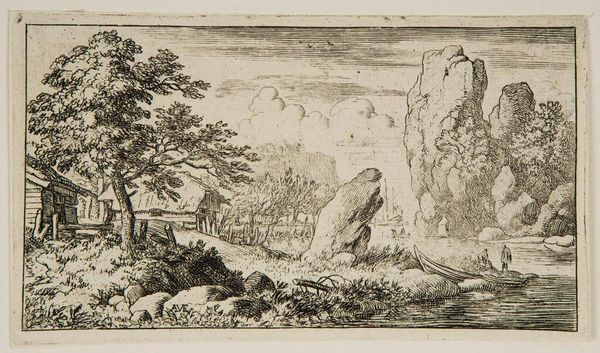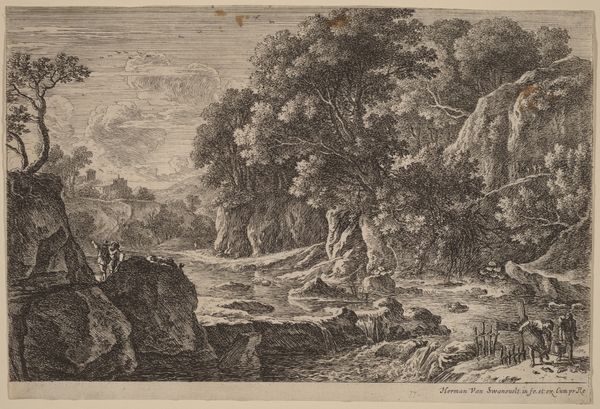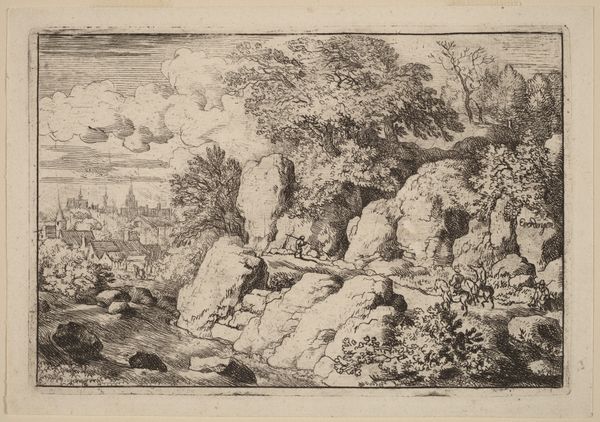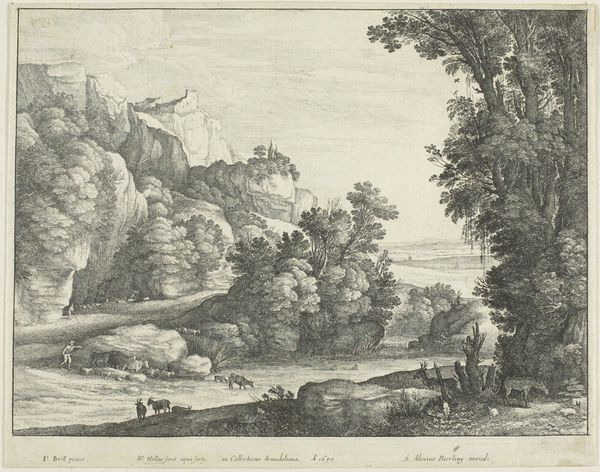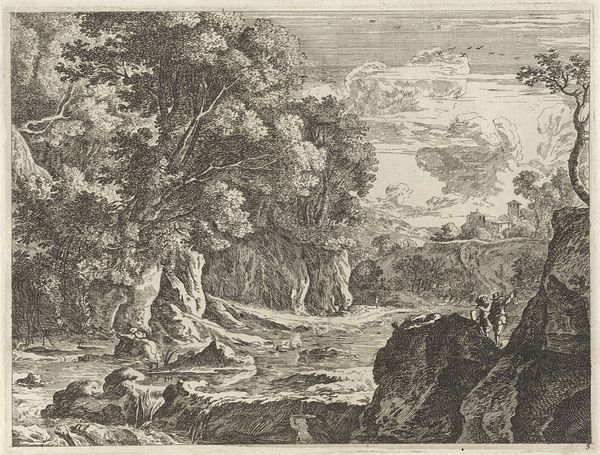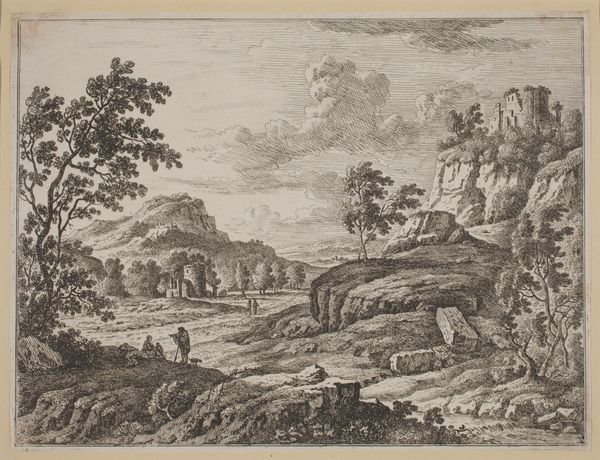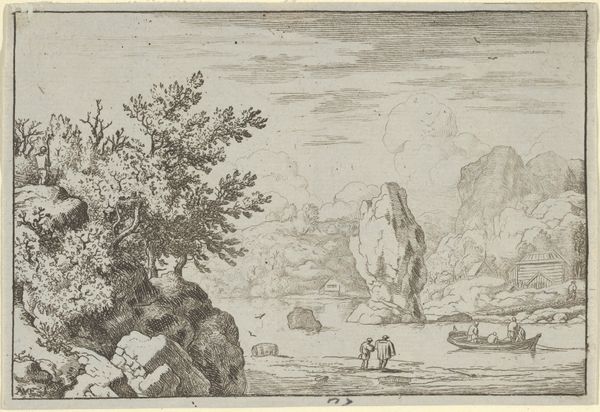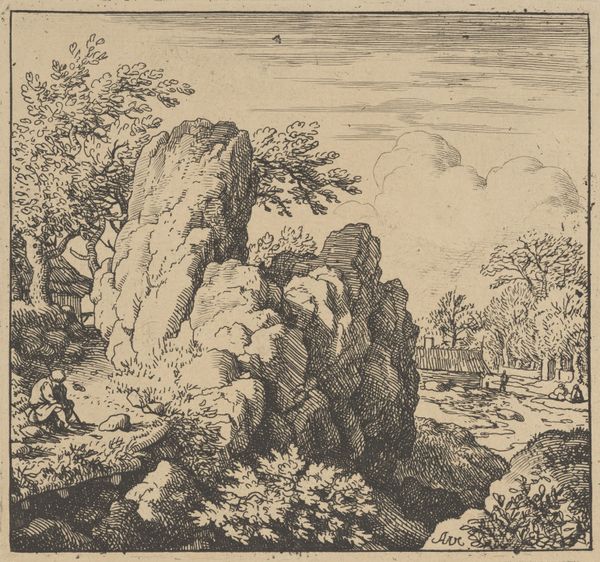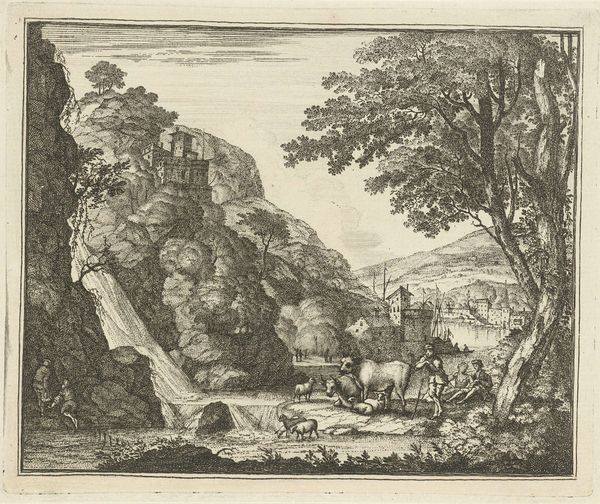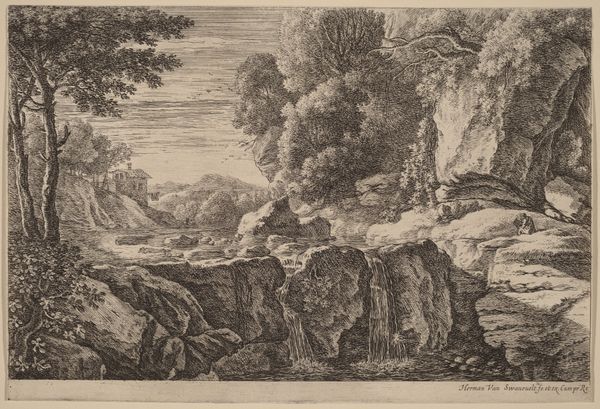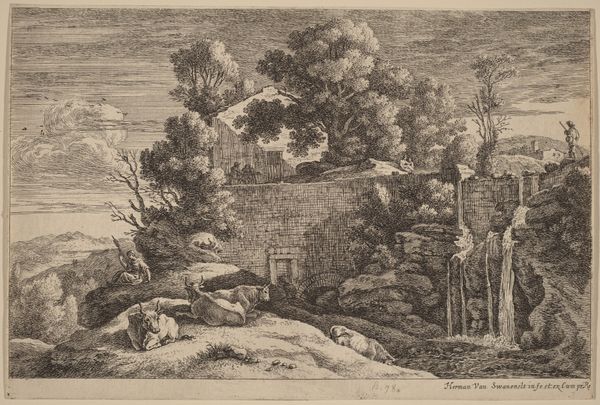
print, etching, ink
#
ink drawing
#
dutch-golden-age
# print
#
etching
#
landscape
#
ink
#
realism
Copyright: National Gallery of Art: CC0 1.0
Editor: So, this is "Pointed Boulder at the Bank of a River" by Allart van Everdingen, from around 1645 to 1656. It's an etching, so the details are very fine, but the whole scene feels pretty wild and imposing, yet grounded. What do you make of it? Curator: It's fascinating to consider this piece within the context of Dutch Golden Age landscape art. While celebrating the land, it also hints at a more complex relationship with nature, wouldn't you say? It is a landscape but nature seems overwhelming. It subtly reminds us of human vulnerability, the precarity of existence against the backdrop of nature’s dominance. Does the etching make you consider ideas related to Romanticism’s sublime and terrifying aspects of nature? Editor: That's interesting, I hadn't thought about the vulnerability aspect, more so the romanticizing of nature! But where would you situate it? Curator: Considering Everdingen's travels to Scandinavia, the scene could evoke notions of the "North" as a space of untamed wilderness. But given the social context of the Dutch Golden Age, with its emphasis on trade and exploration, couldn’t this image be viewed as a meditation on colonialism? The seemingly "untouched" landscape carries layers of social, political and economical meaning. Editor: So, the river isn’t just a river; it could represent trade routes and the reach of colonialism? The boulders too – not just scenic features but symbolic of…what exactly? Resistance? Immovable power? Curator: Exactly! What do the figures in the boat seem to suggest to you? Perhaps they’re symbolic, the human cost of such ventures? What kind of dialogues does this spark? How are we implicated as viewers engaging with the images today? Editor: This reframes the etching for me entirely! I am walking away from it seeing the complex story about the period rather than only a lovely scene. Curator: Absolutely, this dialogue is key. Engaging art means critically understanding the intersectional narratives it evokes and reflecting on our position within those conversations.
Comments
No comments
Be the first to comment and join the conversation on the ultimate creative platform.
